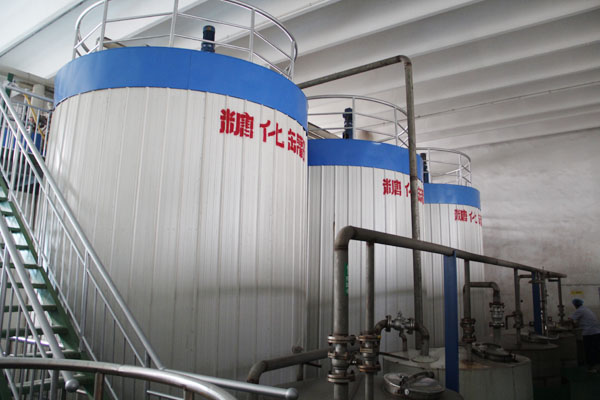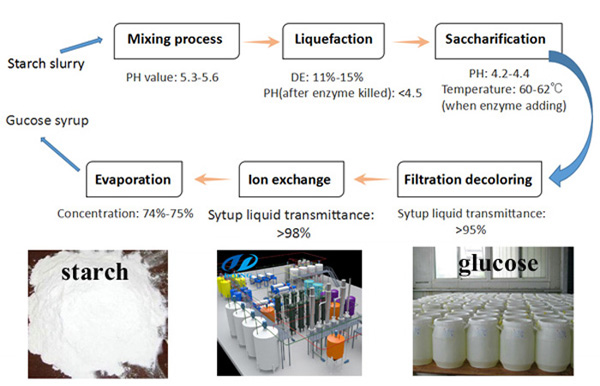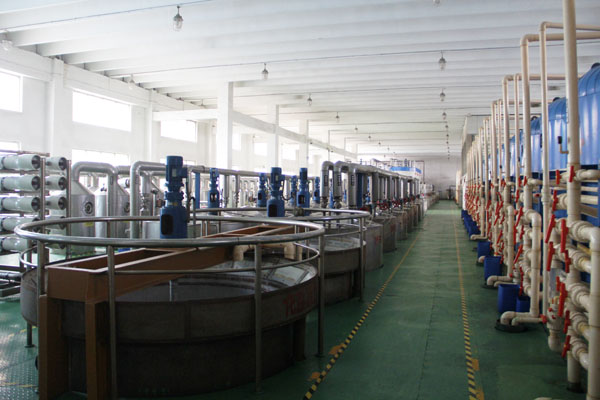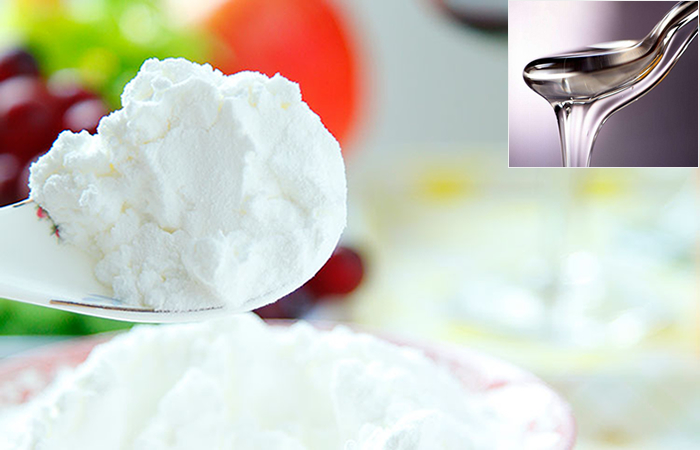What is sugar? Classification of sugar
2019-01-03 / Industry newsAccording to the degree of purification, source, form and color of sugar, it can be roughly divided into the following categories:
1. Refined white sugar: referred to as sugar, is a granular crystal. According to the size of the crystal, there are three kinds of coarse sand, medium sand and fine sand. Currently, the market is supplied main with fine sugar. Made from sugar cane or sugar beets. It is characterized by high purity, low moisture and low impurities. The domestic sugar content is higher than 99.45% and the water content is lower than 0.12%. According to the standard, it is divided into three grades: excellent grade, first grade and second grade, which are suitable for bread and pastry production.
2. Coarse granulated sugar: belonging to unrefined raw sugar, low purity, high impurity, large water, light yellow color, such as Brazilian sugar and Cuban sugar.
 Saccharification tank
Saccharification tank
3. Cotton white sugar: crystals are fine and uniform, the color is white, the texture is soft, the purity is lower than white sugar, the sugar content is about 98%, the moisture is less than 2%, because of the high cost, it is used for high-grade food.
4. Red sugar: granular crystal, color brownish yellow, high acrobatics, but can be used for special purposes.
5. Brown sugar (sweet sugar, brown sugar): generally extracted by the earth method, the most acrobatics, the lowest purity, but has its special flavor and its coloring fast in baking, there are certain applications.
6. Brown sugar powder: the purity is higher than brown sugar, and the scale is convenient, and the amount is more than brown sugar.
7. Rock sugar and borneol: It is not convenient to scale, high cost, less application, and limited to high-grade food.
8. Glucose powder and glucose syrup: The glucose syrup is obtained from the starch by enzyme catalysis or hydrolysis in the presence of an acid, and then spray-dried to obtain powdered glucose, generally containing 8%.
 Glucose syrup production process
Glucose syrup production process
9. Malt block and maltose syrup: It is obtained from barley and wheat by the action of malt enzyme. The finished product produced in China is generally called sucrose.
10. Conversion syrup: prepared by heating sucrose and water in the presence of hydrochloric acid. It is characterized by low viscosity and good transparency. It is an essential raw material for making factory moon cakes.
11. Fruit glucose syrup (isomeric syrup): A part of glucose in the invert sugar syrup is converted into fructose by the action of glucose enzyme. The industrially produced fruit glucose syrup has an isomerization conversion of 42%, and the sweetness at this time is equal to that of sucrose. If the conversion rate is increased again, a higher sweetness can be obtained.
12. Honey: The secretion of bees, high sweetness, and special flavor.
13. Molasses: When the sugar factory makes sugar, the mother liquor left after the syrup is concentrated has the most impurities. However, it has a special aroma and is often used in the production of whole wheat bread.
 Starch sugar making machine
Starch sugar making machine
Fructose and sucrose do not belong to the above classification, more is a chemical name: fructose, a levo- ketose, colorless, syrup-like liquid obtained from fruits and honey. Conventional sucrose is converted into dextrose and levulose by digestion. Lactose, also known as fructose, is a disaccharide consisting of a glucose molecule and a fructose molecule. More precisely, sucrose is dextrose plus levulose. It must be lysed before the yeast is applied. This sugar is converted to D(+)-glucose and D(-)-fructose when heated in an acid solution. Yeast can convert sucrose if it is not already used in this type before using it. It is derived from sugar beets or sugar cane, crushed and dissolved in water. The raw sugar juice is boiled to a point and some components are crystallized. The remaining concentrated syrup (see molasses) is separated from 95+% pure sugar. This crystallization is then further processed several times to increase its purity, ultimately resulting in pure white crystals that we often use. Other commonly used sugars are also produced during processing. This simple colorless sugar can be fully fermented.





